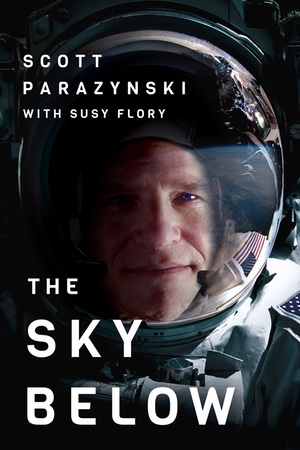Review: The Sky Belowby Jeff Foust
|
| “I’ve learned that adventure is hollow without a greater purpose. Floating in space and looking back home changed my perspective,” he writes. |
Parazynski recounts those adventures, and other aspects of his life, in The Sky Below. The book doesn’t stray far from the typical model of the astronaut memoir, following a more-or-less chronological timeline of growing up, becoming an astronaut, flying those missions, and his post-astronaut career. The book starts with a couple events out of that strict order—a first attempt at climbing Mount Everest in 2008, and a rock climbing anecdote from just before he started astronaut training—then settles into the familiar rhythms of a tale of becoming an astronaut and flying in space.
That doesn’t mean the book is boring, by any account. He recounts in great detail his most famous spaceflight adventure: perched on the end of a robotic arm on the STS-120 mission to perform a repair of a ripped solar panel on the ISS. By this time, Parazynski was one of the most veteran, and skilled, spacewalkers at NASA, but the repair effort pushed his abilities, and those of the team both on the station and in mission control, to their limits. That repair was successful, and has held up to this day, nearly a decade later.
That repair was the highlight of a NASA career that included four other shuttle missions, including STS-95, where he was the “personal doctor” for John Glenn’s return to space. An earlier trip to the Mir space station as part of the STS-86 mission was something of a consolation prize for him after spending several months of training in Russia for a long-duration mission to the station, only to find that, at six feet and three inches, he was too tall to fit into the Soyuz spacecraft and thus not eligible for a Mir mission.
Other aspects of the book touch upon his personal life, including his marriage and two children, but also his divorce and later remarriage to a scientist with a shared passion for adventure. His first attempt to climb Mount Everest failed because he suffered a back injury, but he succeeded on a second attempt a year later, toting with him, among other things, a lunar rock returned by the Apollo 11 mission.
One innovative aspect of The Sky Below, for those who buy the ebook edition, is its use of multimedia. The book, like almost any other of this genre, has its share of photographs, but the book also includes videos and animated graphics. They include, as one example, video from the “helmet cam” on Parazynski’s spacesuit on the famous STS-120 spacewalk, showing the repairs he was making to the station’s solar panel. They are not essential to the book, but they help illustrate the many adventures of his life.
And what of that love of adventure? Near the end of the book, he puts it into perspective thanks to an Overview Effect-like experience. “I’ve learned that adventure is hollow without a greater purpose. Floating in space and looking back home changed my perspective,” he writes. “I’ve looked down at the sky below and realized all of humankind is in the frame, living and breathing and moving inside that paper-thin atmosphere.”
